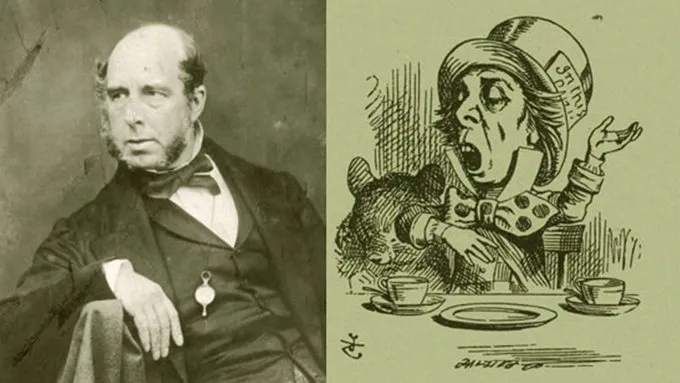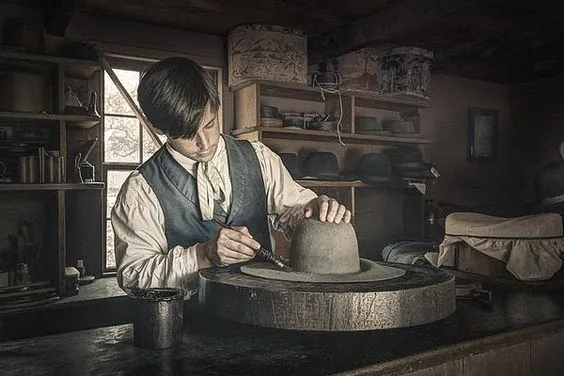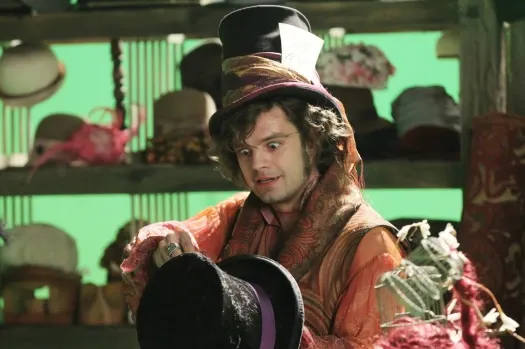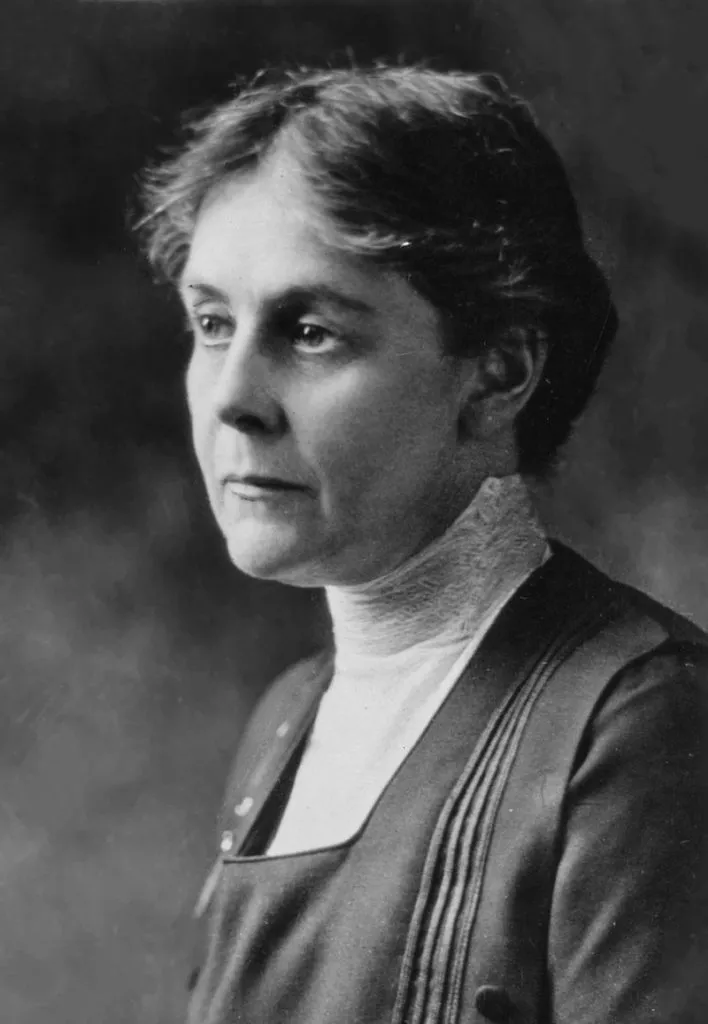
¡Hola Hiver! ¿Recuerdas al simpático personaje de la novela de Lewis Carroll, El Sombrerero Loco de Alicia en el País de las Maravillas? Lo más seguro es que sí lo recuerdes, ya que es uno de los favoritos de todo el mundo, no obstante tal vez no sabías que está basado en la realidad, pero no te preocupes que en este artículo te lo voy a contar.
Hi Hiver! Do you remember the likeable character from Lewis Carroll's novel The Mad Hatter from Alice in Wonderland? Most likely, you will remember him, since he's one of everyone's favorites, but maybe you didn't know that he is based on reality, but don't worry that in this article I'm going to tell you about it.

Algunas personas creen que para la creación del popular personaje, el autor Lewis Carroll se inspiró en Teophilus Carter, un comerciante de muebles a quien todos conocían como El Sombrerero Loco, debido a que siempre llevaba puesto un sombrero de copa alta y también porque fue el autor de algunos inventos raros. A él se le atribuyó (aunque erróneamente) la invención del reloj de alarma, y él aseguraba que su invento no solo despertaría a la persona a la hora exacta, sino que además la sumergiría en un baño de agua helada.
Some people believe that for the creation of the popular character, author Lewis Carroll was inspired by Teophilus Carter, a furniture merchant, known to everyone as The Mad Hatter, because he always wore a tall hat and also because he was the author of some rare inventions. He was credited (albeit wrongly) with the invention of the alarm clock, and he claimed that his invention would not only wake the person at the exact time, but would also immerse them in a bath of ice water.

Sin embargo la realidad es que Carroll se basó en la enfermedad que padeció la mayoría de los sombrereros del siglo XIX, por causa de la inhalación del mercurio que usaban en la fabricación de los sombreros.
However, the reality is that Carroll was based on the disease suffered by most of the 19th century hatters, due to the inhalation of the mercury that they used in the manufacture of hats.
En las fabricas de sombreros victorianas, los artesanos trabajaban con dos tipos de pieles: para los sombreros más caros usaban la piel de castor, y para los más económicos se usaba la piel de conejo. Esta piel requiere de un arduo proceso químico para que esté en condiciones. En primer lugar se hacía un procedimiento llamado carroting, que consistía en usar nitrato de mercurio para alisar las fibras y darle un tono mate, además le otorgaba un tono naranja a la piel. Después de esto, el artesano debía afeitar la piel para remover el pelo y quedarse solo con el cuero, posteriormente se sumergía en una solución herviente de ácido para endurecerla, logrando así que los sombreros tuvieran una estructura sólida.
In Victorian hat factories, craftsmen worked with two types of skins: beaver skins was used for the most expensive hats, and rabbit skin was used for the cheapest ones. This skin requires an arduous chemical process to be in good condition. In the first place, a procedure called carroting was done, which consisted of using mercury nitrate to smooth the fibers and give it a matte tone, in addition to giving an orange tone to the skin. After this, the craftsman had to shave the skin to remove the hair and remain only with the leather, later it was immersed in a boiling solution of acid to harden it, thus achieving that the hats had a solid structure.

Hay que tomar en cuenta que todo este proceso se realizaba en habitaciones con muy poca ventilación. y por lo tanto, los sombrereros no tenían más opción que inhalar estos vapores tan nocivos para su salud.
It must be taken into account that this whole process was carried out in rooms with very little ventilation. and therefore, the hatters had no choice but to inhale these vapors so harmful to their health.

El resultado de esto es que la constante exposición de los vapores, causaba severos trastornos en los sombrereros, ellos empezaban a tener temblores en las manos que intentaban disimular por temor a perder su trabajo, incluso uno de ellos, después de años de haber dejado el oficio, dijo algo con respecto a los síntomas:
The result of this is that the constant exposure of the vapors caused severe disorders in the hatters, they began to have tremors in their hands that they tried to hide for fear of losing their job, even one of them, after years of leaving the job. office, said something about the symptoms:
«Sospecho que yo también lo tenía, pero no iría al médico. Si un trabajador reclamaba una indemnización, entraba en la lista negra de los fabricantes; no podía conseguir otro trabajo, a menos que firmara una exención contra futuras reclamaciones»
“I suspect I had it too, but I wouldn't go to the doctor. If a worker claimed compensation, he was on the manufacturers' black list; I couldn't get another job, unless I signed a waiver against future claims."
Aunado a los temblores, aparecía síntomas más severos como pérdida de audición, de la vista, dientes o uñas, y trastornos neurológicos como alucinaciones que derivaban en un comportamiento muy errático, por lo tanto las personas comenzaron a usar la expresión «¡Loco como un sombrerero!»
In addition to the tremors, there were more severe symptoms such as loss of hearing, vision, teeth or nails and neurological disorders such as hallucinations that led to very erratic behavior, therefore people began to use the expression "Crazy as a hatter!"

Algunos de los sombrereros comenzaron a exigir derechos laborales como mejores condiciones de trabajo, pero los dueños de las fábricas desestimaron sus reclamos, alegando que aquellos síntomas como los temblores y alucinaciones, eran producto de sus borracheras y el uso del tabaco.
Some of the hatters began to demand labor rights as better working conditions, but the factory owners rejected their claims, claiming that symptoms such as tremors and hallucinations were the result of their drunkenness and the use of tobacco.
¿Cuándo y cómo se supo que todo lo causaba el mercurio?
When and how was it known that everything was caused by mercury?
Alice Hamilton fue una médica y científica estadounidense, una mujer muy humanista, con principios y altos valores éticos. Durante una temporada trabajó como residente en una casa de asentamiento, éste era un lugar donde se brindaba educación, alimentación y asistencia médica a personas de muy bajos recursos económicos.
Alice Hamilton was an American doctor and scientist, a very humanistic woman, with high ethical principles and values. During a season she worked as a resident in a settlement house, this was a place where education, food and medical assistance were provided to people with very low economic resources.

Mientras ella trabajaba en este lugar y a medida que conocía a las personas con las que trabajaba, comenzó a interesarse por las enfermedades y lesiones que sufrían algunos trabajadores durante sus largas jornadas en las fábricas, y de esta manera conoció el caso de los sombrereros con comportamientos erráticos, sobre todo los que laboraban en Danbury, Connecticut.
While she was working in this place and as she got to know the people she worked with, she became interested in the illnesses and injuries suffered by some workers during their long hours in the factories, and in this way she learned about the case of hatters with behaviors erratic, especially those who worked in Danbury, Connecticut.
En 1919 Hamilton se convirtió en la primera profesora universitaria cuando la universidad de Harvard le dio una oportunidad entre el personal docente. Esto fue un logro tanto para ella como para el genero femenino, sin embargo su nombramiento generó polémica por el simple hecho de ser mujer. Ella fue contratada por la universidad porque era la mejor en su área, pero tuvo la prohibición de asistir a los actos de graduación.
In 1919 Hamilton became the first woman university professor when Harvard University gave her an opportunity among the teaching staff. This was an achievement for both, her and the female gender, however her appointment generated controversy for the simple fact of being a woman. She was hired by the university because she was the best in her area, but she was banned from attending graduation events.

Alice comenzó a enseñar en el nuevo departamento de Medicina Industrial, y con su nuevo cargo empezó a estudiar los efectos del envenenamiento por mercurio. En 1922 ella escribió un informe al respecto:
Alice began teaching in the new department of Industrial Medicine, and with her new position began to study the effects of mercury poisoning. In 1922 she wrote a report about it:
«De 100 sombrereros sindicales de Dambury, Conneticut, examinados por expertos, 43 tenían intoxicación por mercurio...»
"Out of 100 union hatters in Dambury, Connecticut, examined by experts, 43 of them had mercury poisoning ..."
«Los jóvenes de 20 y 21 ya están tan gravemente envenenados que les tiemblan las manos continuamente, mientras que muchos de los hombres que han servido más tiempo en las fábricas, ni siquiera pueden alimentarse por sí mismos»
"Young people in their 20s and 21s are already so severely poisoned that their hands are continually shaking, while many of the men who have served longer in factories cannot even feed themselves"
Ella concluyó su informe, diciendo que debido a los diversos estudios realizados, quedaba demostrado que los síntomas que tenían los sombrereros no eran producidos por consumo de alcohol y tabaco.
She concluded her report, saying that due to the various studies carried out, it was shown that the symptoms that the hatters had were not caused by the consumption of alcohol and tobacco.
Finalmente el primero de diciembre de 1941, Connecticut prohibió el uso de mercurio en las fabricas de sombreros, pero los fabricantes empezaron a usar ácido clorhídrico, como una alternativa más segura al nitrato de mercurio.
Finally on December 1, 1941, Connecticut banned the use of mercury in hat factories, but manufacturers began using hydrochloric acid as a safer alternative to mercury nitrate.

Y como pueden ver, el origen del simpático sombrerero de la novela clásica de Lewis Carroll, es mucho más siniestro de lo que imaginábamos, pero al mismo tiempo puede ser tomado como una crítica al sistema, el único interés de las fabricas era producir dinero, sin importar la salud de sus empleados, e incluso preferían echarles la culpa de sus dolencias, tal cual como sigue sucediendo hoy en día en algunas fabricas.
And as you can see, the origin of the nice hatter in Lewis Carroll's classic novel is much more sinister than we imagined, but at the same time it can be taken as a criticism of the system, the only interest of the factories was to produce money, regardless of the health of their employees and even preferred to blame them for their ailments, as is still the case today in some factories.
Esto ha sido todo por hoy, espero que les haya gustado el articulo, amigos. Nos vemos en una próxima oportunidad.
This has been all for today, I hope you liked the article, friends. See you at the next opportunity.

Thaks for reading and vote!
